Occlusion
Static Occlusion, Dynamic Occlusion and Guidance
Previous pages have looked at mandibular movements in the sagittal (forward-back) plane.
We will now examine the effects of the mandible moving in lateral excursions.
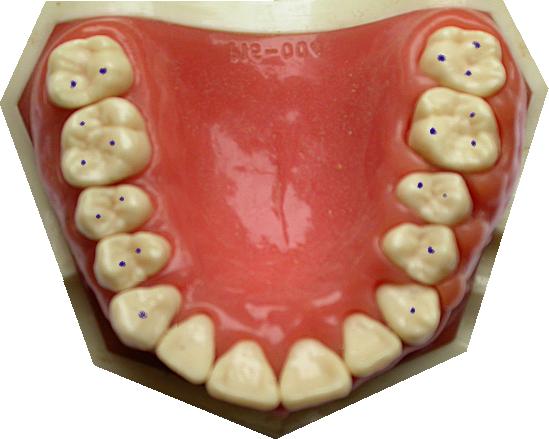
Static occlusion
Static occlusion is the study of contacts between the teeth when the jaw is not moving. The contacts are points (seen as dots when articulating paper is used).
For example, close your teeth in your intercuspal position (i.e. where they meet best). Is your bite heaviest on your back teeth? Is it evenly spread over all the back teeth? Is there hardly any weight on the front teeth? Many dentists would describe that as the “ideal”. If you are providing a crown or filling for a patient like this, you would try not to disturb such an occlusion by leaving the restoration high (or low).
Click the picture above to see the ink marks made with a static occlusion (intercuspal position in this case - the patient was asked to "tap together on the back teeth"). more…
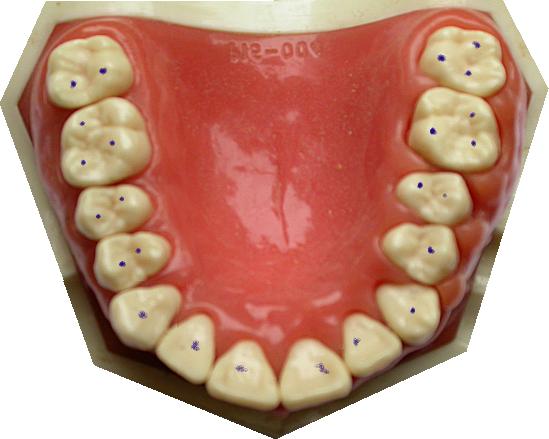
(No) Freedom In Centric
Bite on your back teeth. Can you slide a tiny way forwards before you bump into your anteriors? If so, you have "Freedom In Centric Occlusion" (also known as "Long Centric"). Remember - Centric Occlusion is another word for Intercuspal Position (ICP).
The picture above shows no freedom in centric - ICP causes marks to appear on the incisors. Compare it with the picture at the page top, which has freedom in centric.
Dynamic occlusion
Dynamic occlusion is the study of the contacts that teeth make when the mandible is moving – contacts when the jaw moves sideways, forwards, backwards, or at an angle. The contacts are not points, they are lines.
If you get a patient to grind their teeth in every direction on piece of articulating paper, you will see the lines formed by dynamic occlusion
Although the jaw is moved by muscles, the contact lines depend on both the teeth positions and shapes (obviously), and the shape of the TMJ. These shapes GUIDE the occlusion.
You may have heard the phrases posterior guidance and anterior guidance used when the mandible moves about in protrusive and lateral excursions Can you say what the terms mean?
Working side and non-working side.
Can you define these terms?
Types of anterior guidance in lateral excursions.
Click the pictures to see typical ink marks associated with each type of guidance. Note the dots formed by intercuspal position (static), and the lines caused by a lateral excursion to the right.
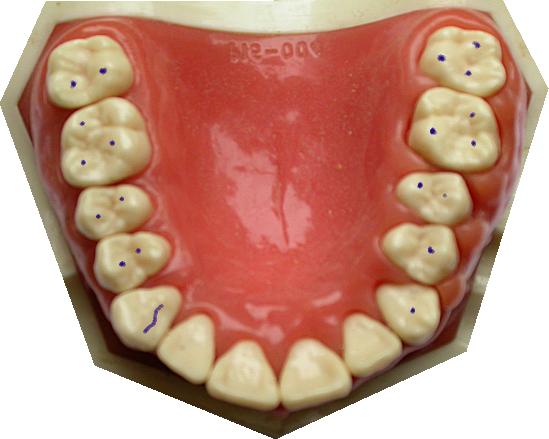 Canine Guidance |
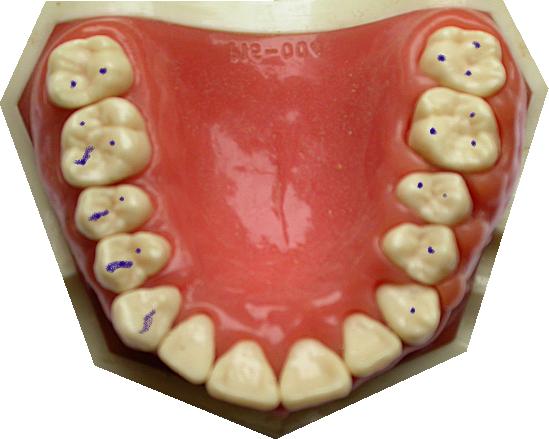 Group function |
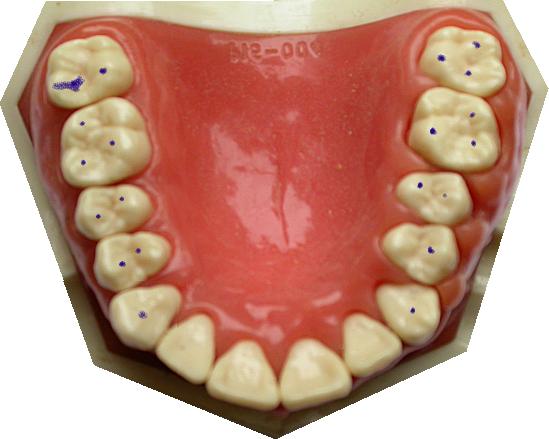 Working side interference |
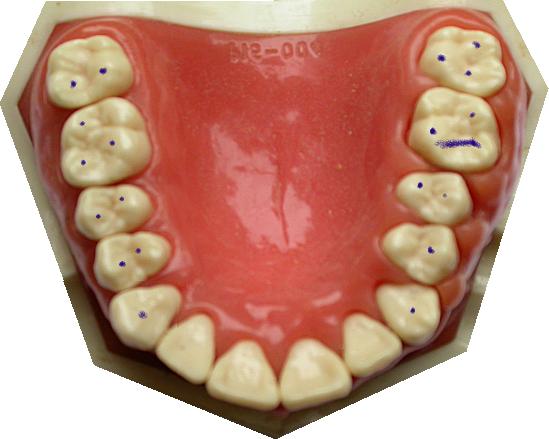 Non-working side interference |
These interferences are providing anterior guidance, but as the name suggests, not in a way that dentists approve of ! They are considered the least desirable types of anterior guidance.

